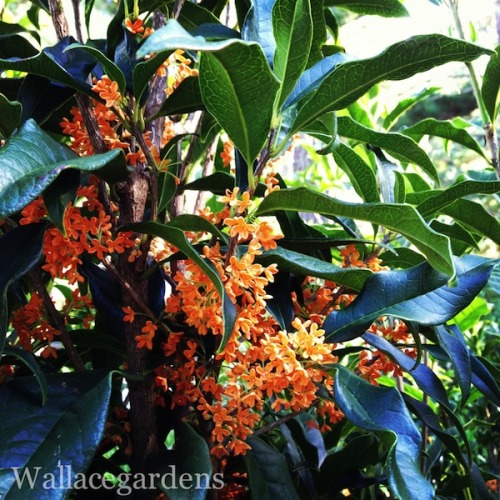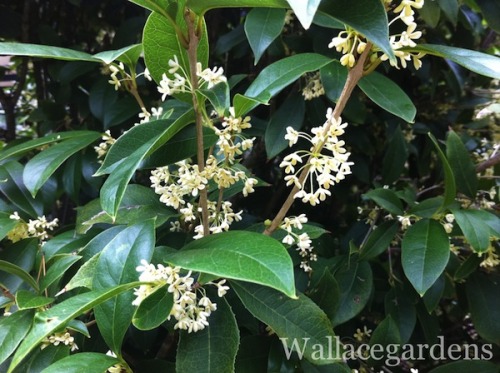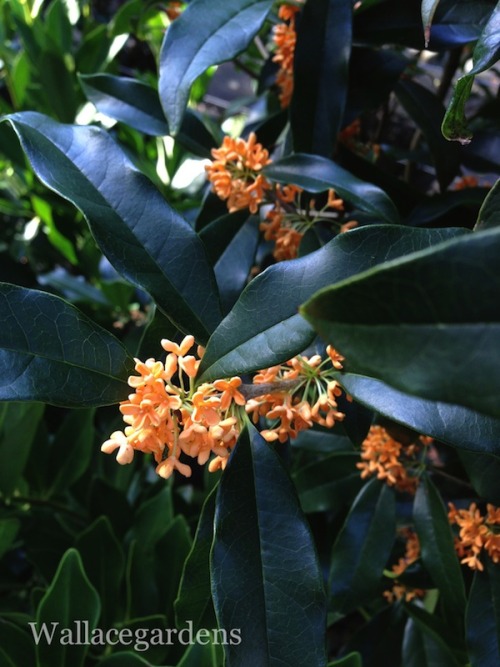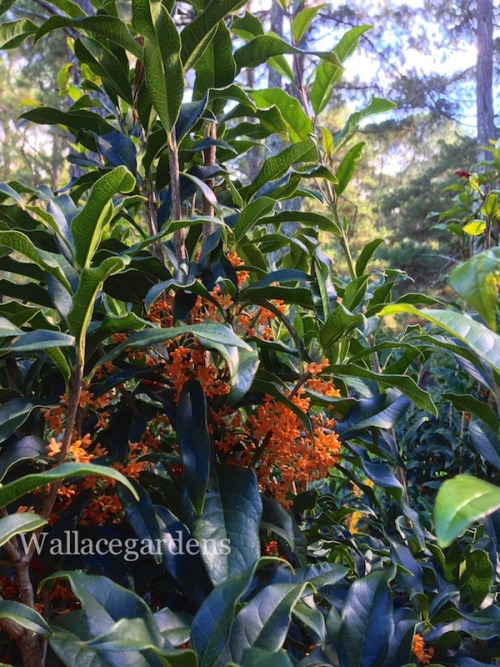It’s October, and if you’ve noticed something sweet in the air, it just might be
It’s October, and if you’ve noticed something sweet in the air, it just might be this beautiful fall-blooming shrub: Osmanthus fragrans var. aurantiacus, the Tea Olive (or Sweet Olive). The dense branches are massed with orange blossoms that have a citrus, peach-like fragrance, so place this near a deck or patio where it will be noticed. Tea Olives work well as a screen or hedge, and take to pruning well. With large dark green leaves, the Tea Olive will reach a height of 10-12 feet (and more) without pruning, depending on location. This particular variety is more cold hardy than the species, tolerating temperatures down to the single digits (Clemson Univ. Coop. Ext.). Tolerating a wide range of horticultural conditions, Tea Olives grow well in full sun to medium shade (with a slightly more open shape in shadier locations). Deer will not bother Tea Olives. “Osmanthus” is from the Greek word osma, meaning “fragrant,” and anthos meaning flower. Tea Olives are natives of the Himalayas, China, and Japan. The flowers are used in Asian dishes, tea, and wine (Kew Royal Botanic Gardens). Here in Georgia, the Sweet Olive was selected as a 2009 Georgia Gold Medal Plant selection. (The white blooming variety is the more common of the species, Osmanthus fragrans.) -- source link
Tumblr Blog : wallacegardens.tumblr.com
#tea olive#sweet olive#osmanthus fragrans#garden design#horticulture#hortdork#hort dork#plants#botany#fragrant#fragrant flowers#wallace gardens#georgia#suwanee#gardening



